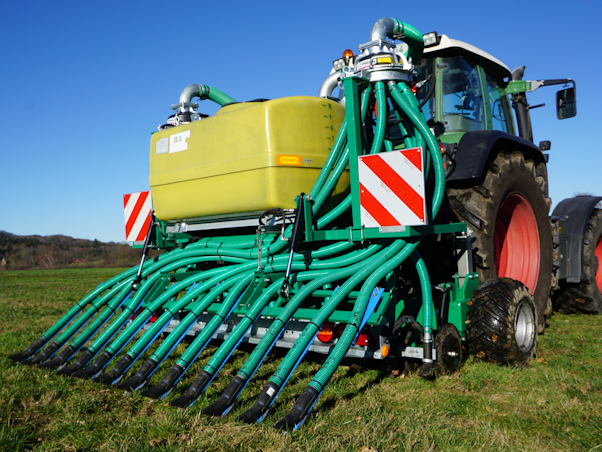The ammonia emissions and nitrogen use efficiency of the different application techniques: trailing shoe, trailing shoe+acidification, open slot, open slot+nitrification inhibitor of four grassland sites were evaluated. Briefly on the techniques: During acidification, the pH value of slurry is lowered by adding sulfuric acid and the ammonia/ammonium balance is raised in favor of ammonium, so that less ammonia is emitted. With the slot injection technique, slurry is deposited in the soil and thus reducing contact with the atmosphere, which also leads to a reduction in ammonia emissions. Compared to trailing shoe application, acidification of the cattle slurry led to a reduction in ammonia emissions of around 41%. The ammonia reduction potential of slot injection was around 20%, depending on location and weather conditions. An increase in grassland yields due to the reduction in ammonia emissions could not be confirmed. The impact on nitrogen use efficiency was also small.
Scroll to top

![[Translate to English:] [Translate to English:]](/media/_processed_/6/4/csm_titel_CO2Kampagne8_afeea2273e.png)
![[Translate to English:] [Translate to English:]](/media/_processed_/4/1/csm_titel_93px_CO2Kampagne8_9b0f3354d4.png)






